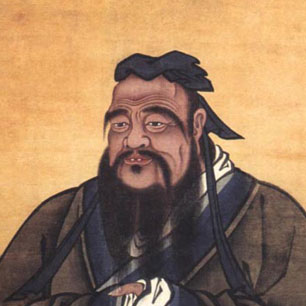
The earliest Confucius portrait drawn on silk and paper was created by Ma Yuan of the Southern Song dynasty (1127-1279) and is collected in the Palace Museum. Other common works are from the Ming dynasty (1368-1644) and the Qing dynasty (1636-1912), most of which are collected in the residence of Confucius family in Qufu. According to a book by Kong Chuan completed in 1134, there were many portraits of Confucius in Qufu Confucius Temple during the Northern Song dynasty (960-1127), and among them, the most lifelike one is that in which Confucius wears formal clothes and is followed by his disciple Yan Hui. However, these portraits fail to be handed down from past generations, except for a few craved on stones. They are now collected in the Shengji Hall of Qufu Confucius Temple.
Confucius descendants continued to collect portraits of Confucius during the Ming and Qing dynasties. There were already eight portraits of Confucius during the reign of Emperor Qianlong of the Qing dynasty according to a book by Kong Jifen in 1762, and the number increased to 13 during the period of the Republic of China through continuous efforts. All these portraits are preserved well except one, among which 11 are collected in the residence of Confucius family, and two, transferred to Jinan in the early days of liberation, are now in Shandong Museum.
Various illustrations of Confucius later appeared in books with the rise of printing and relevant technologies. Mostly privately printed, the portraits inevitably embody personal taste of printing workshop owners or book sponsors, and thus, aesthetic taste of society at that time. A variety of such portraits of Confucius with social aesthetics therefore emerged after the late Ming dynasty (1368-1644).